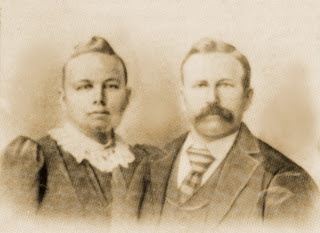 |
| Captain Samuel W. Singleton |
Samuel W. Singleton was born in Nottingham, England on October 28, 1858 and died on July 4, 1933 in Mayport, Florida.
The Florida Times Union
By Bill Foley
Wednesday, July 21, 1999
Story last updated at 1:12 p.m. on Tuesday, July 20, 1999
Story last updated at 1:12 p.m. on Tuesday, July 20, 1999
A captain was remembered while another went to rescue
The captain lay dying.
The sea raged in fury.
The northeaster came up and savaged the coast.
Five huddled in a tossed small boat offshore.
A sixth fought to save it.
Sam Singleton passed away on the Fourth of July 1933.
''Crossed the Infinite Bar,'' the newspaper said.
Precious few rain-whipped miles away George Brown fought to save the cabin cruiser in a howling sea.
Many a life the captain had saved, they recalled that stormy day in his comfortable house by the sea.
Just outside hope screamed away for the seven helpless on the ocean.
E.D. and Laura Sligh, the owners of Sligh's Gown Shop, had gone to fish that day, with Mr. and Mrs. G.C. Meiners and William Overton, all of Jacksonville.
They went in Brown's boat to the snapper bank at 8 in the morning.
Black clouds appeared all around in an hour.
Heavy seas denied the boat a dash for safety.
Capt. Sam had been a St. Johns River pilot 40 years.
Three times he had circled the globe.
No one could say how many lives he had saved.
Four boatloads when the Clyde liner Comanche burned at the mouth of St. Johns.
Sheriff Ham Dowling and some others when their rum-chasing boat blew up.
The whole lot when the steamship Miserie broke up on the jetties.
The crew from the Chatham . . .
But that was then, and this was now.
''Unable to make the lightship, Brown kept the launch headed up into the wind,'' the Jacksonville Journal said.
''The others were kept busy trying to stay with the boat, which by now was pitching and tossing violently.
''They were forced to sit in the bottom of the boat, hanging on until their arms ached.''
Capt. Sam came from Nottingham, England.
He'd lived in Mayport 50 of his 74 years.
He skippered the Meta and other craft used to transfer pilots to other ships.
At his death the old captains gathered: Spaulding, Fozzard and Broward; King, Torrible and Pettyjohn. Mickler, Hemby, Davis, Coleman and Drew.
Just outside, tossed on the roiling snapper bank, Brown lashed his white shirt on the mast as a distress signal.
On the crest of a wave a wink of the shirt caught the eye of a sailor on a freighter passing to port.
The freighter moved to smaller boat. They clashed in the storm but two seamen leaped from a rope ladder to the tossing boat.
The seamen rigged a boatswain's chair. The five in the fishing party were lifted to the freighter, the Lake Osweya, and safety.
Brown stayed with the boat.
The freighter took the passengers to Mayport and transferred them to the pilot boat.
It returned and stood by the the distressed launch until the pilot boat took it in tow.
''The rescued members bestowed high praise upon Capt. George D. Hodges of the Lake Osweya, while Brown was commended for his courage in what seemed certain death,'' the Journal said.
They buried Sam Singleton in Tillotson Cemtery two days later.
The tradition lived on.







































